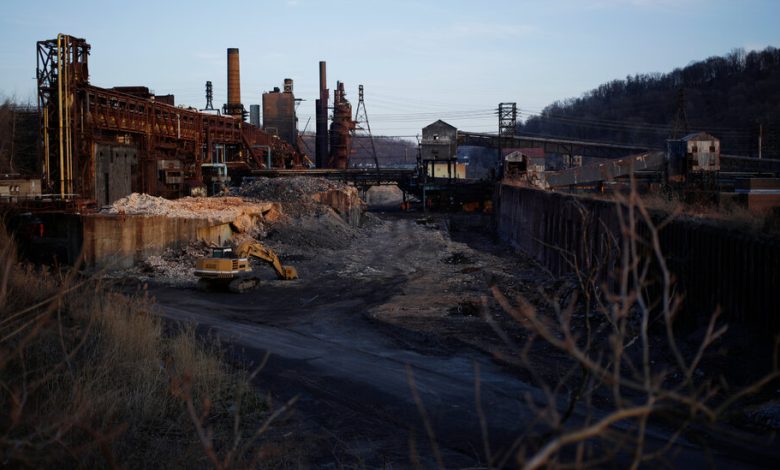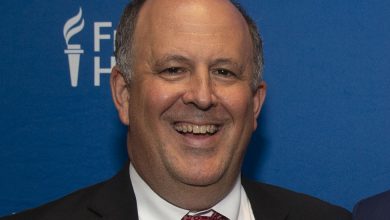Former Coal Towns Get Money for Clean-Energy Factories

In Weirton, W.Va., in the heart of coal country, a company started by MIT scientists plans to build a plant that will produce a metal and alloy critical for clean energy, fuel cells and cleaner steel.
In Vernon, Texas, also a former coal town, a third-generation wind entrepreneur plans to manufacture turbines suitable for remote, rural locations.
And in Vandergrift, Pa., and Louisville, Colo., a window maker plans to retrofit aging factories to produce thin, insulated units that help make buildings more energy efficient.
They’re all projects getting federal funding designed to help small- and medium-sized manufacturers bring clean-energy jobs to former coal communities, part of a $1 trillion infrastructure package signed by President Biden in 2021. The Energy Department announced the projects on Monday.
The program is an effort by the Biden administration to win support for its agenda to reduce American dependence on coal, oil and gas, the main drivers of global warming. But it also points to the broad realization that as the world transitions toward cleaner energy sources like wind and solar, workers in fossil-fuel industries — as well as regions that depend on them — risk getting left behind.
Coal mining jobs have declined precipitously over the past decades, and there were less than 50,000 miners left in the United States in 2022, half the number 10 years ago, according to the latest figures from the Energy Information Agency.
And these energy workers haven’t been finding clean-energy jobs, despite the rapid growth in industries like solar and wind. A recent study that examined 130 million online work profiles found that in 2021, fewer than 1 percent of all workers who left jobs like coal, mining and oil and gas transitioned to “green” jobs in renewables.
Coal workers, in particular, have struggled in the transition, the study found. Less than a quarter of a percent of workers who left a fossil fuel job in West Virginia moved onto a job in renewable energy, said E. Mark Curtis, an economist at Wake Forest University who led the study. Education was another factor: Fossil fuel workers without a college degree were significantly less likely to find clean energy jobs.
“In places like Texas or in the middle of the country where there’s a lot of solar and wind, fossil fuel communities are relatively well positioned to take advantage of renewables,” Mr. Curtis said. “Coal communities generally don’t have that, especially when you think about Appalachia.”
He said it made sense for government funding to target former coal regions, and to focus on manufacturing projects, because data showed that former fossil fuel workers most frequently sought to switch to manufacturing jobs. “I think that’s a very viable type of transition for a lot of these workers and communities to make,” he said.
With the grant program, the United States is also trying to reclaim more clean-energy manufacturing, which China and other countries have come to dominate over the past decade.
The goal is to “bring new economic opportunities and ensure these communities continue their key role in strengthening America’s national and energy security,” said Jennifer M. Granholm, the U.S. Secretary of Energy.
The program will distribute $275 million to seven projects in its initial round and the D.O.E. said it expects its funding to be matched by about $600 million more in private investment.
The companies building the new plants said they are eager to tap local expertise. “The most valuable asset for the project is a legacy work force that has played a significant role in the U.S. metals industry” Tadeu Carneiro, the chief executive of Boston Metal, said in an interview.
Its new West Virginia plant expects to hire 200 to 250 people and will manufacture ultrapure chromium metal and high temperature alloys that are critical materials needed for clean power, fuel cells and steel. Currently, foreign manufacturers dominate those materials.
West Virginia Northern Community College, which teaches about 1,600 students in Weirton, said in a letter of support for the project that it was ready to set up courses and internships for students interested in jobs at Boston Metal.
The proposed project, it said, “can help revitalize metals manufacturing in the region after decades of decline.”



